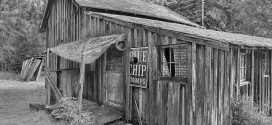by David Hicks, co-president, HomeVestors
As the Foreclosure Era ends and prices rise, a growing number of housing experts and policy makers believe investors have outlived their usefulness and the best thing they could do is to sell off their properties and find another line of work.
For example, recently a majority of more than 100 economists and experts said in a survey sponsored by Zillow that they expect large-scale investors to sell off the bulk of homes in their portfolios in the next three to five years. “Real estate investors, both large and small, played a crucial role in helping to stabilize markets during the darkest days of the housing recession, but a decline in investor activity now isn’t necessarily a bad thing, and could have real benefits for buyers,” said Zillow Chief Economist Dr. Stan Humphries.
Nearly a Million Foreclosures to Come
The role investors played to stabilize failing markets in Florida and the other sand states and to rehabilitate 4.8 million damaged foreclosures is now well documented. Though the foreclosure flood has slowed to a trickle, with 837,000 foreclosures in the pipeline as of December, there’s a lot of work left for investors to do.
Few homebuyers, even move up buyers, have the kind of cash needed to rehab these properties. Maybe a decline in investor activity now would indeed be a bad thing.
A Plague of Persistent Distress
However, the role investor’s play to improve the quality of the nation’s homes has always extended beyond distress sales to huge market in buying old, run down properties, rehabbing them and reselling or renting them out.
Vacant and abandoned housing is a fundamental indicator of persistent neighborhood distress, serving to depress local property values, encourage the spread of crime and strain municipal budgets by imposing higher service costs while reducing property tax revenues. During the worst years of the housing downturn, 4,689 census tracts (the statistical equivalent of a neighborhood) had very high vacancy rates, with more than one in five homes unoccupied, according to the Joint Center for Housing Studies at Harvard. Many of these vacant units are not even for sale or rent. Indeed, roughly 60 percent of vacant units in the distressed neighborhoods of Detroit, Chicago, Cleveland and Baltimore are held off the market.
They are not beyond the reach of investors, however, who for generations have specialized in rehabilitating these properties to sell or rent, and in turn have helped ailing neighborhoods back on their feet. Indeed, as the nation’s housing stock ages today an entire business sector has developed for companies that mine neighborhoods for good prospects to fill the needs of investors looking for new properties to buy.
Mining Neighborhoods for Rehab Prospects
Perhaps the best known and largest of these is HomeVestors. Since 1999, HomeVestors has rehabbed more than 55,000 houses at an average cost of about $20,000 per house. About 35 percent of the houses the company buys this year will be sold to investors, most having gone through a process called “hoteling” where major repairs are made and investors can finish them as they wish. Altogether the company will buy 3.000 to 3,500 houses this year.
HomeVestors doesn’t just look at a house, it evaluates the whole neighborhood and rates them on a scale of one to four. The worst neighborhoods have boarded up houses, vacant lots and more than one or two neglected houses. We just don’t buy those because we know if there is a boarded house that even if we get a house in that neighborhood pristine, we’re going to have a hard time selling it. The only way we would buy a house in the neighborhood would be if we could buy the boarded up one too.
We know from experience that we can’t make money in the toughest neighborhoods unless it can make an impact. When we buy a house, we’ll put a door hanger on all the houses in the neighborhood, and we’ll identify other houses and their owners. For probably 25-30 percent of our houses, that’s how we find them?where we see a house that is vacant or in the tall grass and in need of repair.
While HomeVestors has its approach to buying homes so standardized that it was turned into a training program for all of its 400-plus franchises, other house buying companies like Express Homebuyers, Fast Home Offer, The Home Buyer have sprung up across the country in recent years, each with their own business plan and practices.
It’s a new industry and statistics are hard to come by, but collectively these companies are serving several important roles in the real estate economy. First they find and rehab properties to create upgraded homes for homeowners at a time when inventories are tight. Second, they are healing the persistent decay in distressed urban neighborhoods. Many of the properties they buy are below the radar, unlisted on an MLS and not in the foreclosure process yet as they’re often rotting quietly away.
Finally they are creating an important source of new properties for investors, either to rent or sell. As conditions change, investors will adapt to the new normal in real estate, not by disappearing as the folks in the Zillow survey anticipate, but by adapting and finding new ways to succeed.
 RealEstateEconomyWatch.com Insight and Intelligence on Residential Real Estate
RealEstateEconomyWatch.com Insight and Intelligence on Residential Real Estate

One comment
Pingback: How Entrepreneurs are Reviving Distressed Neighborhoods | Belair Realty